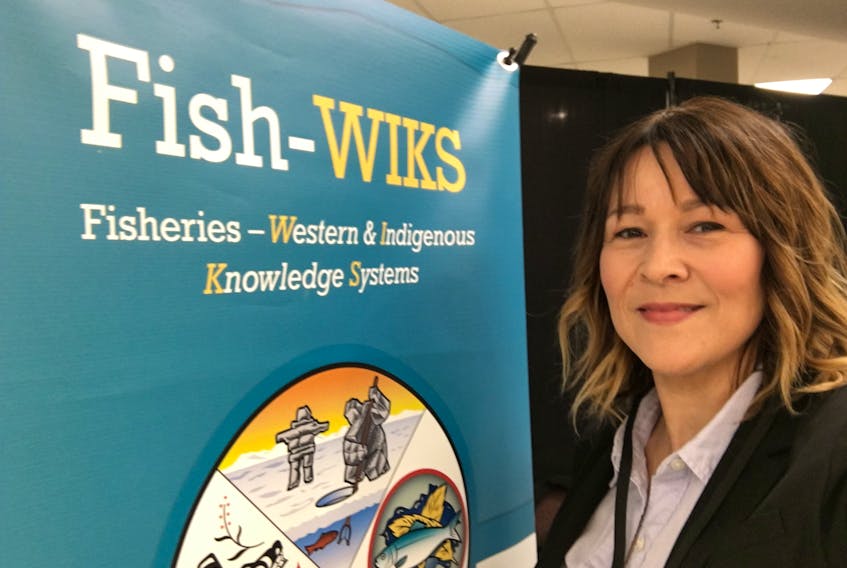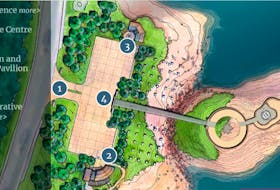As a Mi’kmaw person living in Nova Scotia, I am disheartened at the violence directed at the Mi’kmaw people as they exercise their Aboriginal rights as well as treaty rights to a moderate livelihood.
Aboriginal rights are those practices, traditions and customs distinctive to the Mi’kmaw culture based on historical use and occupancy, whereas treaty rights refer to those rights and obligations negotiated with another nation.
For the Mi’kmaq, treaties secured the Mi’kmaw way of life by maintaining access to resources for their needs, including economic benefit, in an expanding, multicultural society.
Though I am not surprised, cries from the fishing industry for “conservation” and “reason for the season” echo as a coverup for the real reason for contesting the Mi’kmaw livelihood fishery: Fear. Fear of the unknown. Fear we will take what is believed to be “theirs.” Fear over the legal vacuum that applies to Mi’kmaw lobster-livelihood fishers.
From (the industry) perspective, the federal Department of Fisheries and Oceans doesn’t seem to be doing anything to protect “their fishery” …
It is the latter that I wish to speak to in this opinion piece: the fear of lawlessness impacting conservation, which is perceived to occur in Indigenous fisheries. As a result, commercial lobster fishers take matters into their own hands and disregard criminal and civil law by cutting traps, committing arson, engaging in intimidation, and uttering racist comments intended to degrade the Mi’kmaq way of life. Industry-led actions are self-proclaimed vigilantism. And why not? From their perspective, the federal Department of Fisheries and Oceans (DFO) doesn’t seem to be doing anything to protect “their fishery” and the sacrifices they have made over the years to ensure its sustainability.
But the reality is, DFO is not making it easy for either party. My intent is to shed some light on the issue of a lack of rules and how it is intertwined with notions of conservation, and to provide consideration for an interim solution.
There are, in fact, two sets of rules for fisheries. One applies to non-Mi’kmaw commercial fisheries that are under the authority of DFO, and the other set is about the inapplicability of those rules to Indigenous fishers. This is called legal pluralism and arises from the protection of Aboriginal and treaty rights in sections 25 and 35 of the Constitution Act. In addition to the protection of Aboriginal and treaty rights, Canada must justify any limits it places on the rights of Aboriginal people when undertaking their fishing practices. This was the decision of the Supreme Court of Canada in the Sparrow (1990) decision. The court also affirmed Mi’kmaw treaty rights in the Simon (1985) and the more familiar Marshall (1999) decisions.
The treaty right to fish for a moderate livelihood is not a unilateral right to do whatever one wishes. Conservation of the resource is also a reason to justify infringements to treaty (and Aboriginal) rights. However, conservation is no longer just an ecological concept. It is also the political means, used by both DFO and the industry to impose their “rules” and ways to manage fisheries, infringing on the rights of Aboriginal Peoples, including the Mi’kmaq.

From what I see in the media, the commercial lobster fishing industry views the lack of rules for Indigenous counterparts as a threat to conservation. This is not the case. DFO's lack of regulation of First Nations lobster livelihood fishery doesn’t mean it's not regulated. Recently, several First Nations developed community livelihood harvest plans and fisheries policies.
Previous to that, the lobster livelihood fishery was asserted by fishers using cultural teachings and Mi’kmaw values, and incorporated commercial conservation measures such as returning egg-bearing female lobsters and adopting commercial-industry carapace lengths. The constitutional protection of Aboriginal and treaty rights ensures that cultural practices, traditions, and customs are protected, and DFO must justify infringements for any limits placed on the Aboriginal fishery.
It is, in fact, a governance necessity for First Nations to develop their own rules as fisheries policies and harvest plans. The lobster livelihood fishery is more regulated than it has ever been. It is just not DFO-regulated. Regulation through a First Nation community and the willingness to be regulated by one’s community is a positive step. The perception by non-Indigenous fishers and their supporters that Mi’kmaw livelihood fishers are lawless reflects at best a staggering lack of awareness of Mi’kmaw “rules” and at worst, a self-serving interest to maintain prejudices in spite of evidence to the contrary.
If, as the industry claims, “conservation” underlies current concerns, what can the industry do? Under the Integrated Fisheries Management Plans for the inshore lobster fishery, there are opportunities to readjust annual harvest plans.

Would the industry change the season? This is unlikely, as the season does have a reason and it is meant to coincide with allowing lobsters to reproduce in the summer months, working around safety issues, such as sea and ice conditions, and meeting the market demands of hard-shelled lobsters.
Would they increase the minimum legal length? They have in the past, so that is a possibility, but that, too, is unlikely as not all lobster fishing areas take into consideration the reproductive potential of female lobsters when setting a minimum legal length, including lobster fishing areas (LFA) 34 and 35.
Would they take a reduction in traps? Perhaps. And here is where a potential solution lies.
While commercial fishers expect DFO to solve the problem, my suggestion to them is this: Make room for Mi’kmaw livelihood fisheries in the lobster industry.
The treaty right is here to stay and is backed by Canadian law. Making room means many things, but first and foremost, it is about sharing access.
This cannot be a re-do of the buy-back program initiated in 2000 to buy licences and issue them to First Nations to fish exactly like the commercial fishery.
Livelihood fisheries, as a treaty right protected by the Constitution, allow for the incorporation of Mi’kmaw fishing practices. This is the missing piece in the commercial lobster fishery. Access does not need to be new access, as the lobster fishery is considered to be fully subscribed. Sharing access can be led by the commercial lobster fishery.

Currently, Mi’kmaw lobster livelihood fishers are limited through the Marshall decision to acquire only a moderate livelihood. To accommodate that limit, Mi’kmaw fishers/communities set trap limits that are less than the smallest commercial fishery possible (i.e., 75 traps) with even fewer Mi’kmaw lobster harvesters fishing the maximum allotment.
Imagine if each commercial lobster licence holder — there are over 3,000 inshore lobster licences in the Maritimes alone — with the equivalent of over 820,725 traps shared access by reducing their maximum trap allocation by one per cent. This would translate to a reduction of 2.5 to four traps for each lobster licence holder annually. Overall, this would provide access equivalent to 8,207-plus traps for a Mi’kmaq livelihood fishery in the Maritimes region of Nova Scotia.
Given that the livelihood fishery is negligible in comparison to the commercial lobster fishery, this may likely suffice in the interim for the Mi’kmaw First Nations in Nova Scotia engaged in livelihood lobster fishing. Whatever trap allocation is not used by either the Mi’kmaw livelihood fishers or their commercial counterparts could be considered their contribution to sustainability.
Isn’t it worth each commercial licence holder exploring giving up 2.5 to four traps annually in return for building better relations, avoiding conflict, and abiding by the multiple decisions of the courts?
If those are not good enough reasons, and the fear in the industry is that the Mi’kmaw livelihood fishers are indeed a threat to the resource, isn’t giving up 2.5 to four traps worth protecting your livelihood?

Making room for the Mi’kmaq also requires the recognition of treaty rights and an enhanced understanding of the Mi’kmaw context. It involves reconceptualizing small-scale fishing and understanding there is more than one way to achieve sustainability. The Mi’kmaq most likely will not follow all existing commercial fishing rules and will create ones that reflect cultural values and practices.
This is a tough pill for the lobster industry to swallow. But this does not have to be considered a negative attribute. It is just a different attribute. The lobster industry also needs to understand the differences and similarities between these commercial and treaty-based fisheries.
Similarities, for example, exist — such as the common desire to be entrepreneurs who take pride in their ability to support their family through sustainable fishing practices and to pass along those traditions to the next generation. But how this is done is different. There is flexibility provided under the Marshall decision to incorporate Mi’kmaw fishing practices, including fishing outside the commercial season as Donald Marshall Jr. did.
The biggest difference, however, is that a Mi’kmaw livelihood fisher can never make as much money as a commercial one. A moderate livelihood, considered to be necessaries required to support one’s family, is different from the accumulation of wealth, which is currently not limited in the commercial lobster fishery — and the Mi’kmaq are disadvantaged in this regard.
If conservation is the primary issue, as the lobster fishery insists, the industry does have opportunities to initiate its own conservation strategies. Rather than try to prevent Mi’kmaq from fishing, make room for Mi’kmaw livelihood fisheries in Nova Scotia by sharing access and reconceptualizing how these two fisheries can co-exist. We are, after all, treaty people.
Shelley Denny is a Mi’kmaq doctoral candidate in the Interdisciplinary Program at Dalhousie University. The focus of her research is to use Two-Eyed Seeing to develop an alternative fisheries governance model for Mi’kmaw inherent and treaty fisheries in Nova Scotia. Two-Eyed Seeing is the concept that uses the strengths of Western and Indigenous ways of knowing for the benefit of all.









